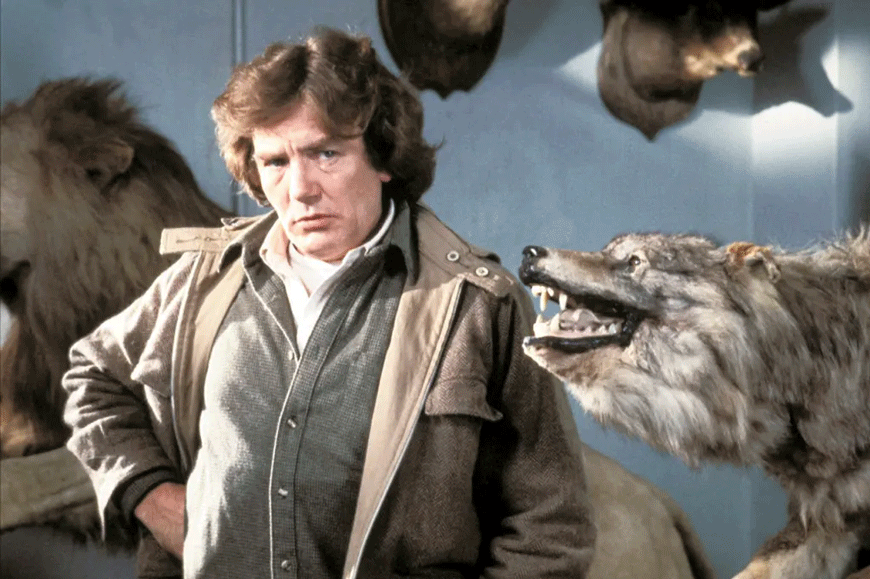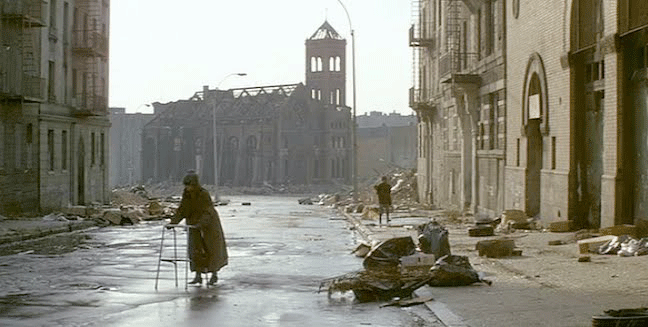The menagerie of well-known financial scams and Ponzi schemes in the past 40 years is too many to list. It’s got some big names on it, too. Lou Pearlman, the producer behind The Backstreet Boys (and alleged pedophile) managed to swindle investors and banks out of $300 million using fictitious companies. Pearlman was convicted in 2008 and later died in prison.
Jordan Belfort, later to be portrayed by Leonardo DiCaprio in Martin Scorsese’s The Wolf of Wall Street, managed to make off with over $200 million. He served his time and, despite calling Bitcoin a “mass delusion”, is very heavily invested in NFTs.
Bernie Madoff, Bruno Iksil, Jeffrey Skilling—there are so many criminals on Wall Street. It’s understandable if you missed Mark Malik.
Malik, to his investors, was the hotshot manager of a hedge fund worth over $100 billion. In reality, he was a former traffic cop and waiter. By the end of his run, he’d blown $850,000 of their money on online dating, dinner out and trips to the Statue of Liberty.
Knowing his investors were on to him must have caused a mental break. First, he tried to fake his death. When that failed, the emails grew deranged.
”YEAH PUT IN ME JAIL GOOD!” read one of his emails. Another, more curious response was simply, “I’m going deer hunting.”
The last email came with a YouTube link included. He sent a “clip of a werewolf movie” to an investor he believed had reported him with the words: “THIS IS WHAT I AM NOW.”
No media outlet named from what film the clip was taken, but it’s not hard to take a guess. The two most popular results that come from “werewolf movie” on YouTube are Joe Johnston’s The Wolfman and John Landis’ An American Werewolf in London.
If it was the latter, it’s almost too fitting, as werewolves and stockbrokers had a very special relationship in the 1980s. It helps to realize that they were everywhere, then.
It was hard to escape them; werewolves were rampant. Stephen King wrote a little loved novella in 1983 entitled The Cycle of The Werewolf, later adapted into the 1985 film Silver Bullet with Gary Busey. The werewolf craze got playwright and filmmaker John Sayles to write a satirical horror script about a colony of self-help werewolves called The Howling, directed by Joe Dante. Outside of London, John Landis turned Michael Jackson into a lycanthropic beast during Thriller's 15-minute long music video. Even Martin Scorsese, long before The Wolf of Wall Street, re-popularized Warren Zevon's Werewolves of London as a pool hall anthem for The Colour of Money. The song’s title would also be reused as the name of a Commodore 64 game in 1987.
Though one wonders, if it wasn’t London, which film did Malik fixate on? Which work best spoke to a predatory con man? He might have chosen 1981’s Wolfen, director Michael Wadleigh’s only narrative work of fiction. If he did, he’d be the prey.
Wolfen opens with the demolition of a slum in the South Bronx, followed by the brutal slaying of the Trumpian construction magnate responsible for it. Though environmental terrorists are the likeliest suspects, the bite wounds on the victims are not human, and the string of killings continues. Detective Dewey Wilson (Albert Finney) is paired with a criminal psychologist (Diane Venora) and a medical examiner (Gregory Hines) to solve the crime.

A procedural/horror hybrid, Wolfen is not the most traditional werewolf movie—some would even argue that it’s not even of that subgenre. It’s a film rich with social commentary still quite relevant, as crises such as housing shortages worsen. It, like many werewolf allegories of the 80s, fits in well with the United Nations Sustainable Development Goals of Reduced Inequalities and Sustainable Cities and Communities.
As implied, Wolfen features none of the traditional werewolf staples—no transformation scenes, no curses. Instead, Wolfen’s procedural elements lead Wilson to a crew of Native American construction workers. Their leader, Eddie Holt (Edward James Olmos), has no problem admitting he’s a shapeshifter.
Shapeshifters, in the film’s lore, can exchange spirits with those of animals—eagles, horses and wolves. In real mythology, it has roots in Greek Literature but is most commonly associated in North America with the Indigenous mythos.
Native shapeshifters play both positive and negative roles in folklore. In Navajo culture, an evil witch or shaman can transform into an animal to cause destruction. This is known as skinwalking.
There’s no question who’s responsible for the murders in Wolfen, as Eddie explains to Wilson in a bar after a frightening encounter.
“The smartest ones, they went underground. Into the new wilderness—your cities. Into the great slum areas, the graveyard of your f—g species,” he explains. Now, the wolves’ hunting ground has been invaded by high-rise apartment condos full of coke-addled socialites.
Wolfen directly points to the regentrification of New York City in the late 70s and early 80s as the cause for the slayings, but the Natives in the film are already marginalized enough. The reason Wilson is even aware of Holt and his crew is due to their past criminality, and they are only suitable for dangerous labour, such as construction at nausea-inducing heights.
Wadleigh, in his only film not about Woodstock, was one of the first to employ thermographic video techniques for the POV of the monster, made famous later in another film about hunting: Predator. It’s stunning here, as wolves stalk Finney through crumbled churches and tenements. The South Bronx of Wolfen is barren, depopulated. The churches and tenement buildings look positively war-torn. In 1980 New York, there was no shortage of rubble to film.

In the 70s, New York lost 825,000 people. All in all, 600,000 impoverished were displaced. During this time, the South Bronx saw 80 percent of its housing units and population decimated.
Gretchen Hildebrand and Vivian Vazquez’ 2018 PBS documentary Decade on Fire offers the most concise and rage-inspiring picture of exactly what happened. It was a lot of little things. Since the 1950s, the neighbourhood was famous for its eclectic racial make-up of Puerto Ricans and African Americans. By the end of the decade, they comprised two-thirds of the population there. When the rest of the country was segregated, it was an impossibility just below East 138th street. The racial makeup made the area a target for redlining, the discriminatory practice of declaring areas largely populated by nonwhites as in decline. When a neighbourhood was in decline, that meant that loans would not be given out there, fire insurance would be denied. The buildings were left to fall apart and burn.
Urban renewal in Harlem led to thousands displaced to the South Bronx, further crowding the neglected buildings. Then the fires started.
The first fire burned in 1968, a tenement building, then another. Buildings mysteriously started to catch fire throughout the South Bronx. When the fires began, the FDNY chief had a simple explanation: you get a lot of immigrants together in unfamiliar surroundings, fires are bound to break out.
In reality, the landlords didn’t care. They didn’t even turn the boilers on during the freezing New York winters. Neglected buildings meant neglected wiring. Fires were, indeed, bound to break out. It got so bad the fire department stopped filing reports.
If the fires were set by residents, they were usually caught and confessed that they were paid to set the building alight. Contemporary news stories didn’t bother to mention who might have paid them, but it’s not hard to guess looking at some of the insurance payouts to landlords.
As New York slid toward bankruptcy, Mayor John Lindsay called on the RAND Corporation for help. Without getting too technical, RAND’s computers, already known for helping decimate life in Vietnam, advised that Lindsay close some firehouses to save money. Over the course of the 70s, 12 firehouses were closed in the area. All of this was occurring at the same time a counselor to President Nixon, Daniel Patrick Moynihan, was pushing the policy of “benign neglect.”
President Carter pledged to help, but was voted out of office before anything was put in motion, replaced by a former actor who told the neighbourhood, “No politician can wave a magic wand!” In the end, it was the residents who helped save the South Bronx. The People’s Development Corporation was founded and began renovating buildings. A group of carpenters trained residents to work on their own homes. The group soon inspired offshoots.
Wadleigh was always disappointed Wolfen was taken as a horror film and not a serious political work. It’s a shame it wasn’t taken more seriously, as it works incredibly well in both contexts. The ties to reality are clear. Finney’s investigation is helped by a RAND-like corporation that employs high-tech lie-detectors well outside the NYPD budget. And of course, the corporation’s first suspects are angry activists. At no point is any of this addressed directly in the film, the RAND-like agents are simply present—like they always should have been a part of the investigation.
It’s happening now, likely where you live. History is certainly repeating in the South Bronx, as residents are fighting to resist gentrification. Decade of Fire climaxes with the same residents who rebuilt the South Bronx aligning to battle a corporate takeover. In Canada, algorithms like the ones RAND used to determine the necessity of firehouses are now making racist decisions. New ad-blocking technologies mean that houses, when they are available, aren’t even marketed to minorities.
We’ve seen the protections granted to landlords run rampant during the pandemic, with New York almost never prosecuting one for a DIY eviction.
In Toronto, low-cost apartment complexes are facing demolition all over the city in favour of condominiums. Forget benign neglect, the response from politicians is out and out brutality, raiding encampments of the displaced.
What, one wonders, might a stockbroker or any power player in the financial game identify with from werewolf lore? It can’t possibly be the outsider status that films like Landis’ London explore, where an American Jewish tourist is ostracized. Wall Street brokers are notorious for their clan-like activity. Outsiders aren’t welcome.
The only attraction evident comes from wolf behavior; the party pack of elite hunters that prey on the nightlife like the irritatingly oft-quoted “wolf pack” of The Hangover franchise. Indeed, a controversial and popular practice exists amongst hedge fund managers known as “Wolf Pack Activism”, in which one investor will seize on a company or property aggressively, attracting the others. This is done to seize control over the company without the need of reporting your holdings to the SEC. Bonding with nature and the deeper spiritual connection that Eddie Holt describes is lost on them until it rips out their jugular.
Some people care. Small, local nonprofits are the best option for helping the homeless near you. If you’d like to help internationally, please visit the Institute of Global Homelessness or World Habitat. If you live in Los Angeles, please visit FOODNOTRENT.ORG. If you happen to be in the South Bronx, please visit Banana Kelly.
